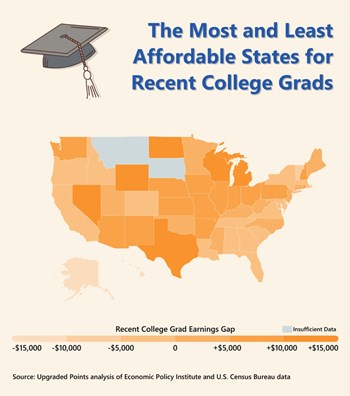
For recent college graduates, where you live after school can shape your financial future as much as your major, or your first job. With the class of 2025 entering a job market marked by tighter white-collar competition, AI encroaching on entry-level roles, and higher unemployment, the question isn’t just how much new grads can earn, but how far that income will actually go.
A recent study from Upgraded Points reveals which U.S. metros and states are the most and least affordable for recent college graduates, comparing median earnings with cost-of-living estimates to identify where new grads can get the strongest start—and where even solid salaries may fall short.
It’s Tough Out There for a Grad
For the class of 2025, it’s a particularly difficult time to enter the job market. Economic uncertainty, a cooling in white-collar hiring, and artificial intelligence’s increasing takeover of entry-level roles are contributing to a more competitive landscape for recent college graduates — and higher levels of unemployment. In fact, a recent analysis by the Financial Times found that young men with college degrees are now just as likely to be unemployed as their peers without a college education.
Although what college a young job seeker went to and what major they chose are still key in determining the job they get and how much money they make after graduation, where a graduate lives is also a major factor in long-term financial outcomes. To better understand these impacts, researchers analyzed which U.S. metro areas and states are most and least affordable for recent college graduates. The analysis compares median earnings data from the U.S. Census Bureau with cost of living estimates from the Economic Policy Institute to assess how far a graduate’s income goes across the country.
The Good
Tucson, Arizona, ranks as the most affordable large metro area for recent college graduates, with median earnings exceeding estimated living costs by $19,260 per year. Recent graduates in Tucson earn a median income of $61,770, while the local income required to cover essentials such as housing, transportation, and healthcare is just $42,510. Relatively low housing costs, and the city’s position as a regional hub for job opportunities in aerospace and defense, health care, and higher education — anchored by the University of Arizona — make it an attractive option for young professionals.
Milwaukee, Wisconsin follows closely, with recent graduates earning $18,590 more than the estimated $43,180 needed to cover basic expenses. Houston, Texas, ranks third among large metro areas, with graduates earning $15,760 more than what is needed to cover costs. Despite its size, Houston maintains a below-average cost of living compared to other major metro areas, helping recent grads stretch their paychecks further. The numbers suggest that a combination of moderate costs and solid local job markets — rather than simply high salaries — makes certain metro areas more financially viable for young, college-educated workers.
The Bad
Unlike the most affordable metro areas, which are mostly clustered in the Midwest and other lower-cost regions, the least affordable large cities for recent grads are more spread out — both geographically and economically. This group includes high-cost coastal hubs like San Diego and New York City, as well as fast-growing Sun Belt cities like Orlando, Florida, and Nashville, Tennessee. What they have in common is a noticeable gap between what recent graduates typically earn and what it takes to cover basic living expenses.
San Diego ranks as the least affordable large metro area, with recent grads earning nearly $62,000 but still coming up $9,640 short of what’s needed to break even. New York City, which ranks ninth worst overall, tells a similar story: Graduate wages are relatively high at $63,830, but the cost of living is even higher, leaving grads nearly $5,000 in the red. In places like California and New York, even strong starting salaries can’t keep pace with the high cost of living — especially housing.
Here is a summary of the data for New York-Newark-Jersey City, NY-NJ:
- Recent college grad earnings gap: -$4,820
- Median earnings for recent college grads: $63,830
- Income required to cover necessities: $68,650
- Housing costs: $23,310
- Food costs: $4,890
- Transportation costs: $10,610
- Healthcare costs: $7,270
- Other necessities costs: $9,490
- Income taxes: $13,080
For reference, here are the statistics for the entire United States:
- Recent college grad earnings gap: +$2,410
- Median earnings for recent college grads: $54,560
- Income required to cover necessities: $52,150
- Housing costs: $14,700
- Food costs: $4,350
- Transportation costs: $12,540
- Healthcare costs: $5,520
- Other necessities costs: $6,410
- Income taxes: $8,630
Read the full report and methodology here.
Upgraded Points is a company that provides advice on credit cards rewards programs and other financial products.




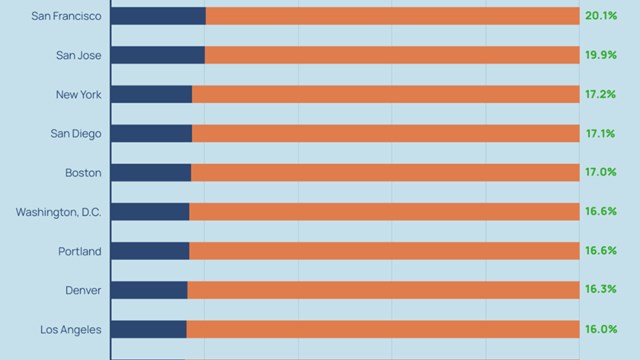
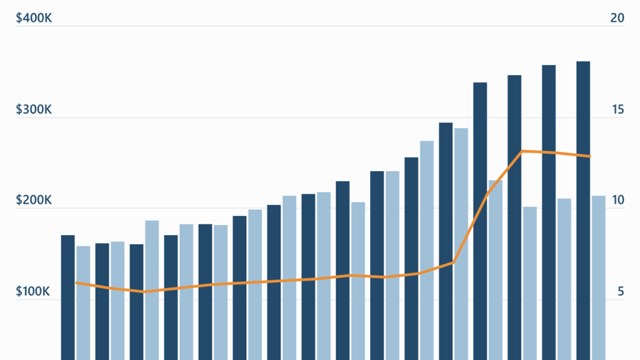

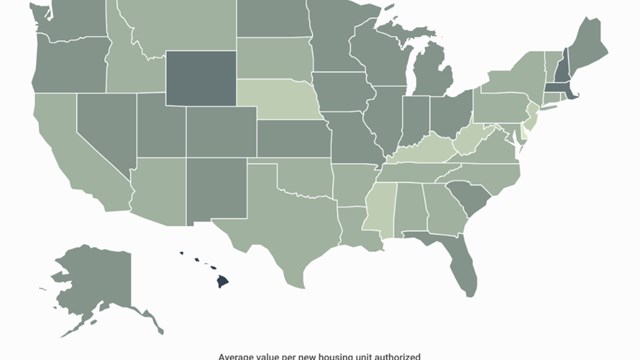
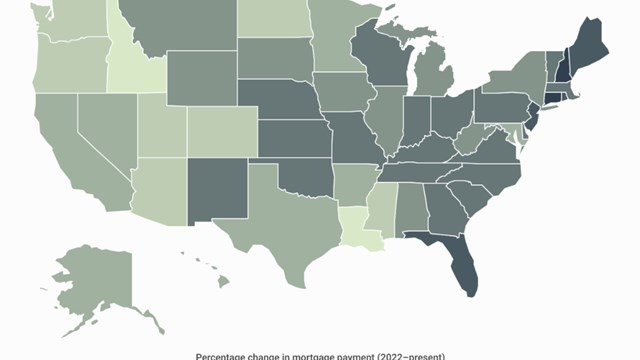
Leave a Comment